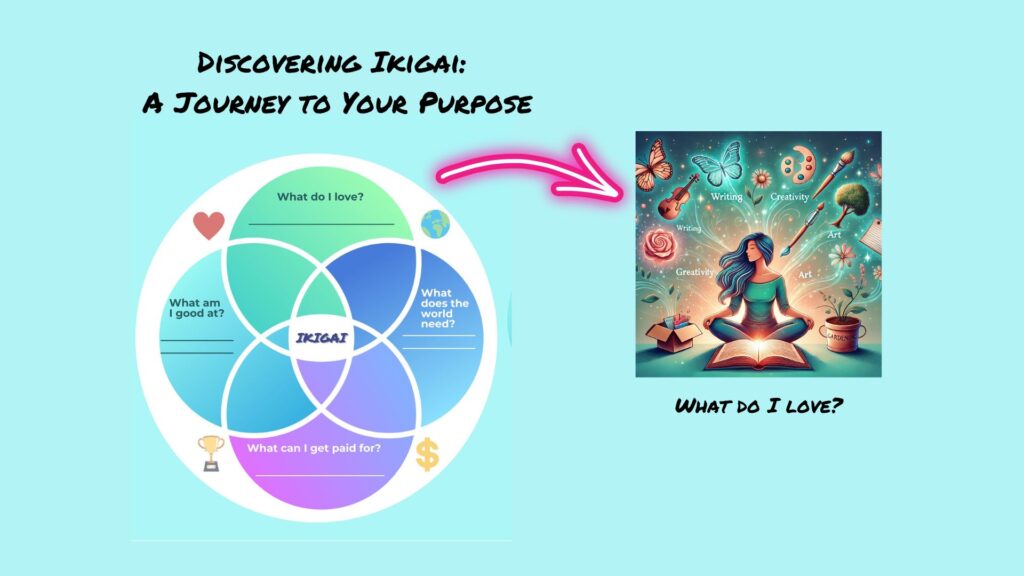
Discovering Ikigai: A Journey to Your Purpose, Part 1
Have you ever felt something missing in life—a sense of direction, joy, or fulfillment? The Japanese concept of Ikigai, meaning “a reason for being,” offers a roadmap to uncovering your true purpose. Derived from Iki (life) and Gai (value or worth), Ikigai represents the beautiful intersection of what you love, what you’re good at, what the world needs, and what you can get paid for.
This four-part blog series will explore how to identify and live your Ikigai. But before diving into the elements of this concept, we’ll start with an essential step: preparing your inner world for the transformation to come.
What is Ikigai?
Ikigai is more than just a word; it’s a philosophy rooted in the culture of Okinawa, Japan, a region renowned for the longevity and happiness of its people. At its core, Ikigai is about living a life of meaning and balance, guided by your passions, talents, and contributions to the world. Unlike Western notions of success, which often prioritize financial gain, Ikigai embraces the idea that true fulfillment lies in harmony—within yourself and with the world around you.
The Importance of Inner Work
Before you can identify your Ikigai, it’s crucial to clear the emotional and mental clutter that might be holding you back. It was a lesson I learned the hard way. Despite over two decades of inner work, I had a rude awakening four years ago when a repressed memory surfaced: I hated my father. This revelation was painful and transformative, reminding me that uncovering purpose requires ongoing self-reflection and healing.
Ikigai isn’t just about what you do; it’s about who you are. To truly connect with your purpose, you must first understand and release the beliefs, patterns, and traumas that no longer serve you.
The Four Elements of Ikigai
At the heart of Ikigai are four interconnected elements:
- What You Love: The passions that ignite your soul and make you lose track of time.
- What You Are Good At: Your unique talents and skills that come naturally or have been cultivated over time.
- What the World Needs: How you can contribute to others and make a meaningful impact.
- What You Can Get Paid For: Opportunities to align your purpose with financial sustainability.
Finding your Ikigai means exploring where these four areas intersect in your life. It’s a process of self-discovery, reflection, and action. Download the diagram for Ikigai.
Preparing for Ikigai
Setting the stage for discovery is essential before diving into the details of these elements. Here are some steps to help you prepare:
- Reflect on Your Identity: Your job or external roles do not define your identity. Who are you beyond your title?
- Take Pleasure Seriously: Find joy in simple activities and hobbies. Often, these small moments lead to deeper passions.
- Connect with Others: Engaging in what you enjoy often leads to meeting like-minded people who can inspire and support your journey.
Reflective Questions to Begin Uncovering Ikigai
As you explore the first element of Ikigai—What You Love—consider these reflective questions:
- What do you never get bored with? (Do you remember loving anything as a child?)
- When do you feel happiest? (What fills you with joy and fulfillment?)
- What were you doing when you last lost track of time? (What activities absorb you completely?)
- If you’re working: Are you excited to go to work? Do you feel emotionally connected to the results of your efforts?
- If you have a hobby: Is it something you can’t get enough of? Does it bring you excitement and joy?
These questions will help you identify what truly lights you up and connects to the first pillar of your Ikigai.
My Insights
Ikigai manifests in my love of creating, learning, and helping others heal. Whether exploring new tools like Canva, coaching clients through trauma, or sharing the joy and freedom I’ve found in recovery, my Ikigai is rooted in curiosity and connection. These are the passions and talents that guide me every day.
Discovering your Ikigai is a journey that begins with curiosity and reflection. Take some time to explore the questions above, and don’t rush the process. In the next post, we’ll dive deeper into the second element of Ikigai: What you are good at. Together, we’ll continue to uncover the unique purpose that makes your life worth living.
Stay tuned for Part 2 of this series, and take the first steps toward identifying your Ikigai.
For personal direction and help with identifying your Ikigai, schedule a complimentary 1-hour Discovery call.

